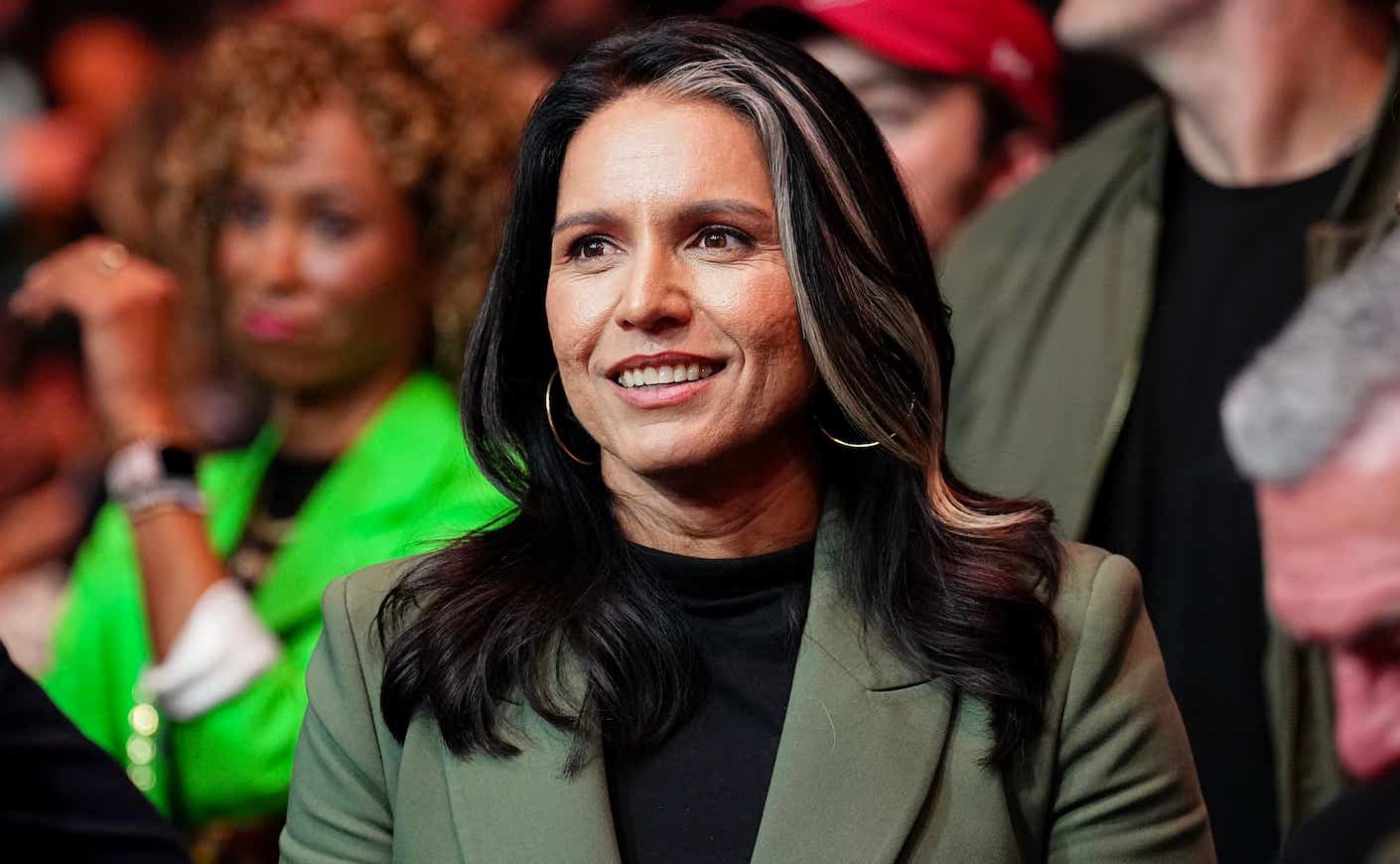Donald Trump has made some surprising staffing choices in recent weeks, but his pick to lead U.S. intelligence services has raised more eyebrows than most.
Tulsi Gabbard, a former Democratic Rep. from Hawaii turned Trump loyalist, has come under scrutiny for her views on Russia and her dealings with Syria. We’re taking a closer look at that, why some believe she’s “compromised,” and how Gabbard went from a rising star of the left to a MAGA darling.
Tulsi Gabbard’s time in the military and early political career
Gabbard was born in American Samoa and was raised in Kailua, Hawaii. In 2002, when she was just 21, Gabbard was elected to Hawaii’s House of Representatives, leaving after one term after her National Guard unit was deployed to Iraq. Gabbard then completed the officer training program at the Alabama Military Academy and served as an Army military police platoon leader in Kuwait.
From 2013 to 2021, Gabbard represented Hawaii in the House, where she quickly rose to national prominence and was described by Nancy Pelosi, then House Minority Leader, as an “emerging star.” In 2013, she was elected as vice chair of the Democratic National Committee but resigned in the run-up to the 2016 election in order to endorse Bernie Sanders. She launched her own campaign for White House in 2019, ultimately dropping out to back Joe Biden.
Tulsi Gabbard’s move to the right
In the years that followed, Gabbard appeared to drift further from the left, becoming a vocal critic of President Biden and making regular appearances on Fox News. In 2022, she announced her decision to leave the Democratic Party altogether and become independent.
“I can no longer remain in today’s Democratic Party,” Gabbard said on her podcast. “It’s now under the complete control of an elitist cabal of warmongers driven by cowardly wokeness, who divide us by racializing every issue and stoking anti-white racism, who actively work to undermine our God-given freedoms enshrined in our Constitution.”
By that point, Gabbard had already won over plenty of fans across the MAGA base and was even rumored to be a potential running mate for Trump. Earlier this year, she was asked by his campaign to help prep the president-elect for his debate against Kamala Harris. In August, she officially endorsed Trump and, just weeks before she was tapped for director of national intelligence, Gabbard announced that she’d changed party affiliations again, this time becoming a Republican.
“I’m proud to stand here with you today, President Trump, and announce that I’m joining the Republican Party,” she said at a rally in October. “I am joining the party of the people.”
The controversy over Tulsi Gabbard’s views on Russia and Syria
Gabbard’s foreign policy views don’t quite align with the national security establishment. She’s avidly opposed to U.S. military intervention overseas and has made some alarming remarks about Russia in recent years.
During her bid for the White House in 2019, Gabbard received a disproportionate amount of coverage and praise on Russian state news media for a long-shot candidate. That elicited suspicion among some prominent Democrats, including Hillary Clinton, who implied that the Russians were “grooming” Gabbard as a third-party candidate to disrupt the 2020 election.
In 2022, she also came under fire for repeating a Kremlin claim that Ukraine hosts dozens of U.S.-funded biological laboratories working on dangerous pathogens, although there’s no evidence to substantiate this. At the time, Sen. Mitt Romney accused her of “parroting fake Russian propaganda,” and then-Rep. Adam Kinzinger called it “traitorous.”
Critics say she also has a troubling relationship with Syria. In 2017, she said she was “skeptical” that Syria was behind a chemical weapons attack that killed dozens and made an unannounced trip to meet Syrian President Bashar al-Assad, whose regime has been accused of killing thousands.









